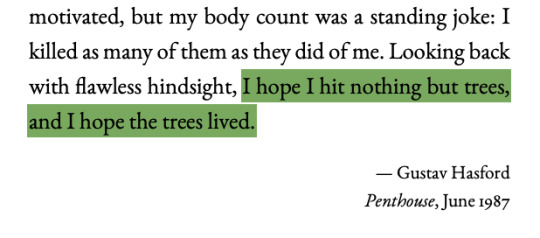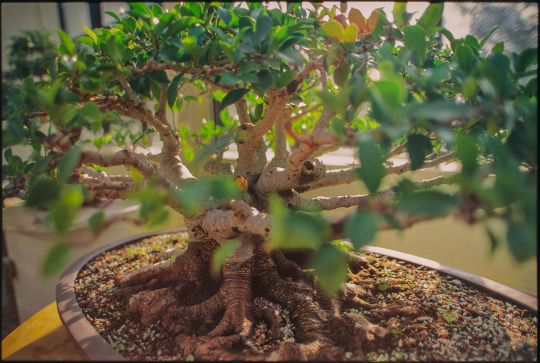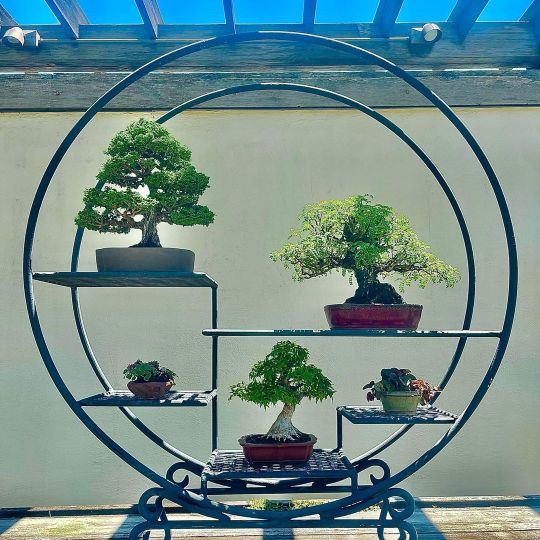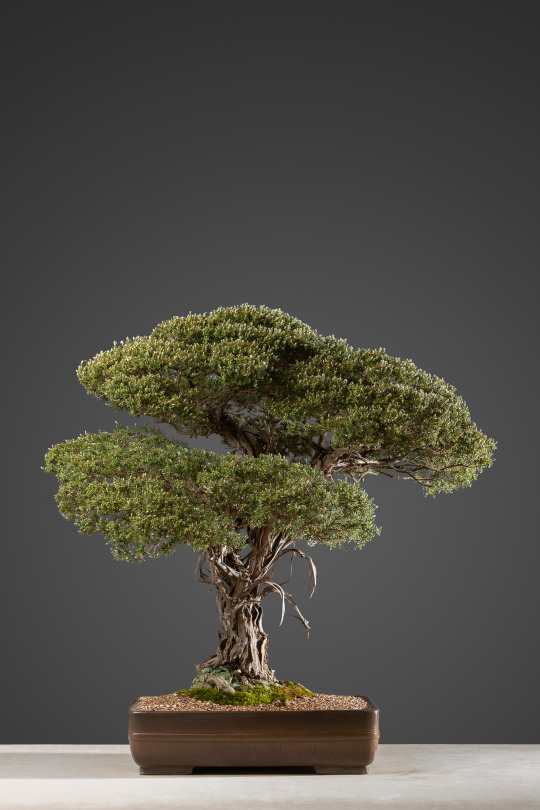#national bonsai & penjing museum
Text

The National Bonsai & Penjing Museum, Washington, DC
photo: David Castenson
303 notes
·
View notes
Text

Shohin display, National Bonsai & Penjing Museum, Washington, DC, 2021 - by David Castenson, American
272 notes
·
View notes
Text

A Japanese White Pine (in training since 1625) at the National Bonsai and Penjing Museum in Washington, DC. This tree survived the bombing of Hiroshima.
photo
87 notes
·
View notes
Text




WAR & TREES: webweave.
Vietnam Means Never Having to Say You're Sorry by Gustav Hasford, Bonsai tree and its information panel at the National Bonsai & Penjing Museum, Christmas at the Front: French Soldiers chopping down a tree in 1914
14 notes
·
View notes
Text

Chinese Juniper, National Bonsai & Penjing Museum, Washington, DC.
74 notes
·
View notes
Text

Pasture Juniper
"In training since 1980" [Please give it a diploma it looks perfect]
Gift of Jack B. Douthitt, 1990
From The North American Collection at the National Bonsai & Penjing Museum [x]
3 notes
·
View notes
Photo

National Bonsai & Penjing Museum, at the U.S. National Arboretum, Washington DC. Nikon FE2, 28mm. Fujichrome Provia 100. NIK
#National Arboretum#washington dc#National bonsai Museum#bonsai#Fujichrome Provia 100#www.graypictures.com
4 notes
·
View notes
Text

The National Bonsai & Penjing Museum, Washington, DC photo: David Castenson
0 notes
Text
1 note
·
View note
Photo

The Bonsai and Penjing Museum is part of the @fonarboretum. Fall is a terrific time to visit to see the different foliage colors and tree shapes. #gardendc #mydccool #igdc #dc #dmv #wdc #dcgardens #bonsai #penjing #picoftheday #nofilter (at United States National Arboretum) https://www.instagram.com/p/CklGR8euBgW/?igshid=NGJjMDIxMWI=
1 note
·
View note
Text

Stone lantern - The National Bonsai & Penjing Museum, Washington, DC
photo: David Castenson
332 notes
·
View notes
Text
Zen leaf york pa

#Zen leaf york pa full
Some species are popular as bonsai material because they have characteristics, such as small leaves or needles, that make them appropriate for the compact visual scope of bonsai. Bonsai can be created from nearly any perennial woody-stemmed tree or shrub species that produces true branches and can be cultivated to remain small through pot confinement with crown and root pruning. This may be a cutting, seedling, or small tree of a species suitable for bonsai development. Instead, bonsai practice focuses on long-term cultivation and shaping of one or more small trees growing in a container.Ī bonsai is created beginning with a specimen of source material. By contrast with other plant cultivation practices, bonsai is not intended for production of food or for medicine. Purposes of bonsai are primarily contemplation for the viewer, and the pleasant exercise of effort and ingenuity for the grower. According to Stephen Orr in The New York Times, "the term should be reserved for plants that are grown in shallow containers following the precise tenets of bonsai pruning and training, resulting in an artful miniature replica of a full-grown tree in nature." In the most restrictive sense, "bonsai" refers to miniaturized, container-grown trees adhering to Japanese tradition and principles. The loanword "bonsai" (a Japanese pronunciation of the Chinese term penzai) has become an umbrella term in English, attached to many forms of diminutive potted plants, and also on occasion to other living and non-living things. It was during the Tang dynasty, when penjing was at its height, that the art was first introduced in Japan. Similar versions of the art exist in other cultures, including the miniature living landscapes of Vietnamese Hòn non bộ. Unlike penjing, which utilizes traditional techniques to produce entirely natural scenery in small pots that mimic the grandiose shapes of real life scenery, the Japanese "bonsai" only attempts to produce small trees that mimic the shape of real life trees. Our knowledgeable team is here to effectively coordinate critical details while serving as the “eyes and ears” of our clients.Bonsai at the National Bonsai & Penjing Museum at the United States National Arboretumīonsai ( Japanese: 盆栽, lit.'tray planting', pronounced ( listen)) is the Japanese art of growing and training miniature trees in pots, developed from the traditional Chinese art form of penjing. Strong Project Management is imperative when undertaking complex projects. In an effort to help remediate under-performing spaces, Tricarico has worked across various industries to provide recommendations and solutions. This degradation can lead to discomfort, lost business, and higher energy and utility costs. READ MORE Operations & MaintenanceĪs facilities age and maintenance schedules break down, equipment efficiencies and reliabilities for major engineering systems worsen.
#Zen leaf york pa full
department provides a full range of mechanical, electrical, and plumbing services. We unite originality with proven best-practice methodologies to ensure that initial concepts are transformed into distinctive, buildable and cost-effective designs. READ MORE Interior DesignĪt Tricarico, we nurture innovation and cultivate creativity. Tricarico is comprised of Architectural Studios that specialize in a variety of categories including Retail, Automotive, Corporate Interiors, Food Service, Commercial and Fitness & Health.

0 notes
Text

中國榆樹 A Chinese Elm penjing (training date unknown) at the National Bonsai and Penjing Museum in Washington, DC.
生命的精神和藝術的姿態
The Spirit of Life and the Gesture of Art
photo
25 notes
·
View notes
Photo

On a waking tour of the National Bonsai Museum here in Washington, DC, which has over 135 trees on display. One of the best times to visit is during the fall when the foliage of the deciduous bonsai change color. (at National Bonsai & Penjing Museum) https://www.instagram.com/p/CfRD1u-O8rQ/?igshid=NGJjMDIxMWI=
0 notes
Text




In our "Bonsai Empire 21st anniversary" series we share a post today created by: National Bonsai & Penjing collection of Australia
"The National Bonsai & Penjing Collection of Australia (NBPCA) is a partnership between the ACT Government and the Australian Bonsai Community. The Collection was officially opened on 28 September 2008 by then ACT Chief Minister, Jon Stanhope and Roger Hnatiuk representing the bonsai community. The NBPCA resided in Commonwealth Park near Stage 88 between this time and the 1st of February 2013 when it moved to the National Arboretum Canberra.
The Collection consists of 120 exhibits with approximately 75 trees on display at any one time. The trees are a variety of traditional and modern styles with the Collection highlighting Australian native species including Banksia serrata and Angophora costata.
Many of the trees are owned by the Collection whilst others on loan from around Australia by the artists or their family. This allows for continued involvement with the community and enables for a dynamic and diverse collection that is always changing and providing new experiences for visitors.
Instagram = @ledanta
Facebook = @NationalBonsai&PenjingCollectionOfAustralia
The trees:
Woolly tea tree (leptospermum lanigerum) Age: 31 years - Height: 100cm tall – Artist: Will Fletcher
Coast banksia (banksia integrifolia) Age: 44 years – Height: 120cm tall – Artist: Lynne Farrell
Fresh-water paperbark (melaleuca rhaphiophylla) Age: 54 years – Height: 130cm – Artist: Derek Oakley
Smooth-barked apple (angophora costata) Age: 63 years – Height: 140cm – Artist: Ted Poynton"
This post was shared to celebrate Bonsai Empire's 21st birthday. We share photos from well known Bonsai experts, museums and magazines in the next few weeks, so stay tuned!
72 notes
·
View notes
